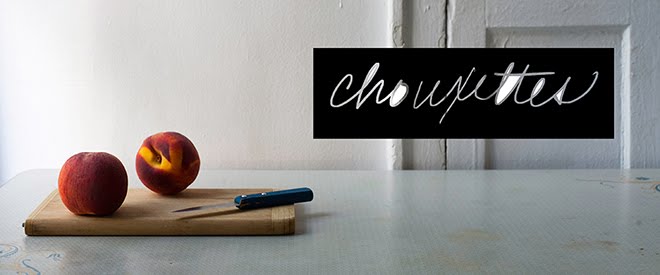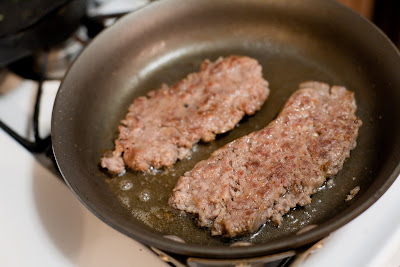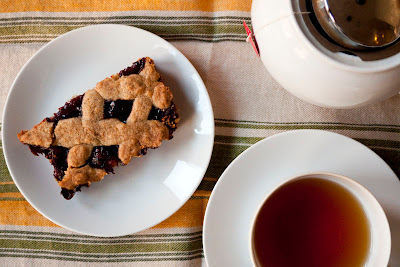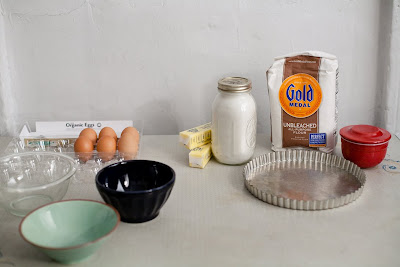
Dear Michelle,
I did not intend to share this recipe, mostly because we've been sharing a lot of pasta dishes lately. So I didn't measure, I didn't write anything down, and I didn't photograph the process. I cooked the way I used to before we started sharing, and therefore caring about replication: by feel.
Jeff and I are not known for our culinary self-control. We are getting married in about two months (!), and therefore should be eating healthy and all that. I've said repeatedly in the past few weeks, "No more cheesy things! we need to eat healthy food! after this (pizza, or grilled cheese, or cake), we will eat fresh vegetables every night!" But then, it was cold out, we had been working on not-fun stuff all day, and have had several busy weekends recently, so when I exclaimed that I wished we could just have mac and cheese for dinner, Jeff volunteered to brave the elements and go to the cheese shop.
The Bedford Cheese Shop, that is. That place is one of my favorite shops in New York; if you live in the city, like cheese, and haven't been there, go directly. They are (mostly) very knowledgeable, not just about the taste of the cheese but about the food and wine to pair with it. For example, Jeff went in and told them we were making macaroni and cheese, wanted a cheddar, something soft and melty, and something with depth. He came home with a delicious English cheddar, sharp and nutty; a fontina, rich and creamy with a round flavor like swiss; and a sheep's cheese, hard, salty and irresistable.

We had a box of tri-color rotini in the cupboard, which I chose for the color and touch of additional flavor. While that was cooking, I steamed some broccoli, and started a bechamel sauce. Once the broccoli is semi-cooked, and pasta just short of al-dente, it all gets mixed up with the cheesy bechamel and some reserved chunks of cheese, then the whole thing gets dumped into a gratin dish and baked until heated, melty, and a little crisp on top. The resulting dish is so creamy and cheesy, but not stringy or rubbery. The pasta is tender, and the broccoli adds a nicely contrasting texture and flavor. I'd recommend eating this with a salad lightly dressed with a mustard vinaigrette.
I think it is the best mac and cheese I've ever had, and I wish I'd taken a photo of it, just-baked, for you. As it is, I've settled for photographing the leftovers I'm about to enjoy. And, tonight, we'll have some fresh vegetables. Maybe.

Mac and Cheese. Well, Rotini and Cheese.
Note: you could use one kind of cheese here; having three just makes it extra-special. If you want a stronger garlic flavor, throw the garlic halves into the bechamel while it is thickening, then remove before combining everything.
1 lb pasta (something small, preferably something that will really hold a sauce well)
about 3/4 lb cheese, 1/4 lb each chedder, sheep, and fontina (go for the best here; it makes all the difference)
about 3-4T butter
about 1/4 c flour
about 2 c whole milk
two heads of broccoli, about 4 inches in diameter each, chopped into smallish florets (about an inch long by 1/4 -1/2 inch wide. Should be small enough to eat with a bite of pasta) and peeled lengths of stems
1-2 cloves garlic
1 7x10" or 9x9" gratin dish.
Start a large pot of water boiling for the pasta. Go hang out for a little bit.
If you haven't already, cut up the broccoli into florets. Start this steaming, and get a large bowl of cold, cold water ready. After just a couple of minutes, start testing the broccoli; you don't want it quite done, but barely tender enough that you can push a knife into it with a little effort. Once done, plunge into cold or iced water and leave.
Preheat oven to 350F.
Cook pasta till not-quite al-dente, then drain and rinse under cold water.
Grate 2/3 each cheese, keeping separated. Crumble or chop what's left into small chunks (no larger than a 1/4 inch/). Get out and measure milk, butter, and flour. Rub gratin dish with halved garlic slices.
Melt butter in saucepan or skillet over medium-low heat. Add large handful of flour, and stir with whisk until it smells very slightly toasted, but has not turned color. Add milk slowly, whisking the entire time. Once thickened (it will take about 5 minutes), add the grated hard cheese in handfuls, whisking to combine fully in between handfuls. Do the same with the cheddar, and lastly with the fontina. If sauce gets too thick, add another 1/4 c milk, whisking in slowly. Once all of the grated cheese is combined and sauce is smooth, add 2/3 of the chunks of cheese. Add to pasta along with broccoli, then put all in gratin dish. Sprinkle the rest of the cheese on top. Put in oven till cheese is melted, and pasta looks a little bit crunchy on top, 20-30 minutes. Heats up well, but is not quite as good the next day.




















































